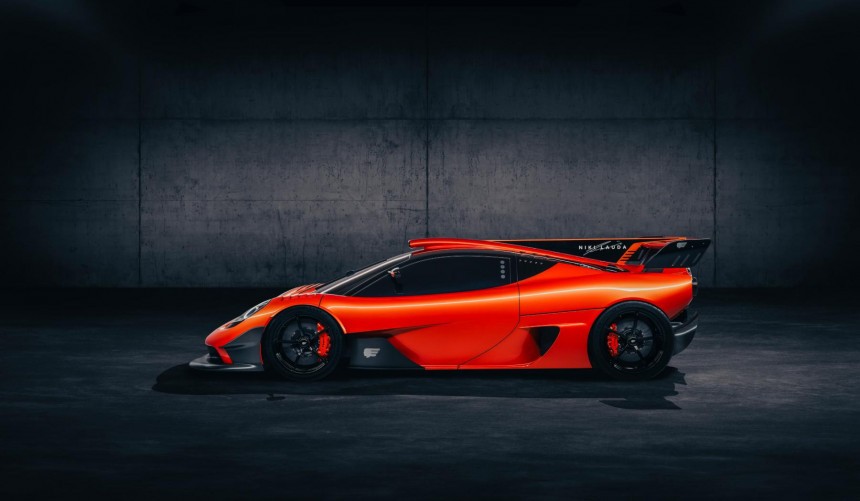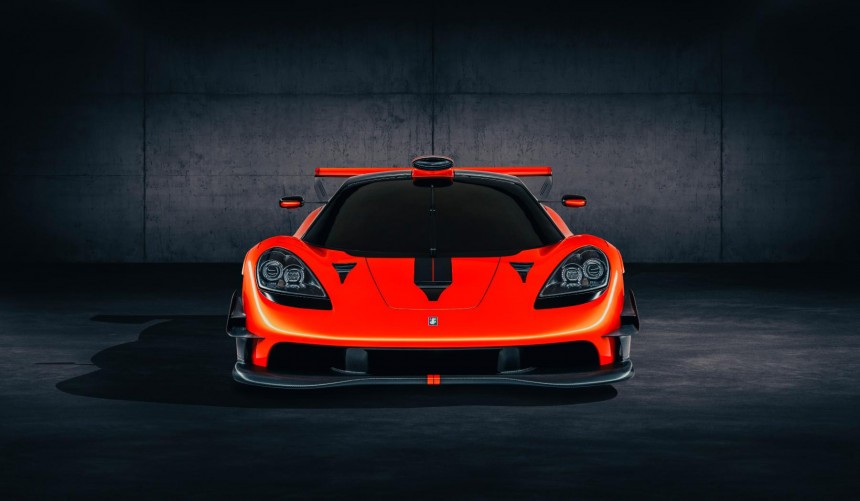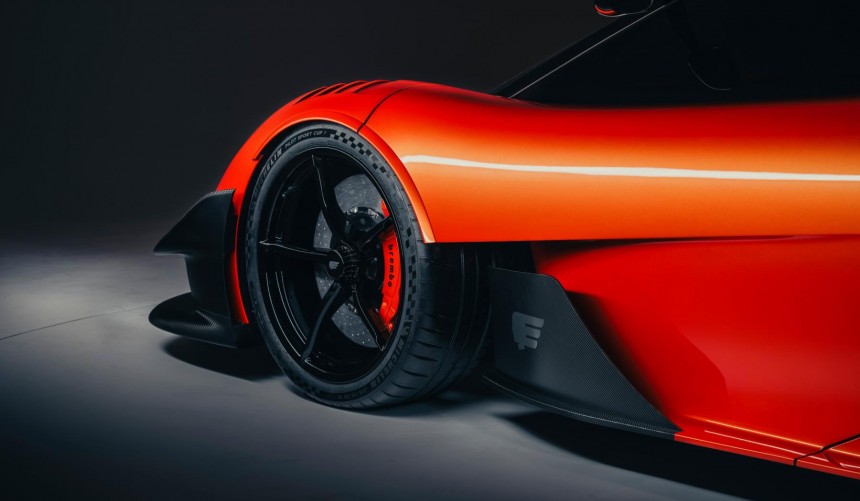The GMA T.50s Niki Lauda, one of the most highly anticipated track-focused hypercars in recent memory, is here, and it’s so aerodynamically innovative that it produces almost twice its weight in terms of downforce.
More than three decades have passed since the legendary automotive designer Gordon Murray convinced McLaren bosses to green-light his outstanding project and built the ultimate road car.
Thus, in 1992, the McLaren F1 was released, and it quickly became legendary both on public roads and on the track. Three years after its release, five F1 GTR versions finished the 24 Hours of Le Mans race in first, third, fourth, fifth, and thirteenth overall.
McLaren decided to release five ultra-exclusive, track-focused road cars called the F1 LM to honor that feat. They were all based on the GTR race cars but without the engine intake restrictions imposed by FIA. Therefore, their power output was a whopping 671 hp.
In recent times, McLaren has been focusing on developing hybrid supercars while Murray was busy designing a worthy successor for the F1.
It might not use the British carmaker’s logos, but the GMA T.50 unveiled last year is undoubtedly the rightful heir to the F1’s throne. Its design reminds us of the ‘90s supercar, it’s powered by a massive naturally-aspirated V12, and it even uses the same seat configuration as its predecessor.
Just like the F1, the T.50 will have a track-oriented sibling, which was just unveiled in the form of the T.50s Niki Lauda, a mind-blowing vehicle with some of the most sophisticated aerodynamics ever created, designed to offer an exhilarating driving experience.
The car's front features a splitter with a central aerofoil section that generates huge amounts of downforce. This section includes a channel that directs the airflow under the car to the central diffuser section, maximizing aero efficiency and decreasing the car’s sensitivity to pitch.
The nose of the car features a pair of NACA ducts mounted in high-pressure areas to channel fresh air to the large front brakes, while an additional central duct feeds air to the cabin.
Stretching from the top of the roof to the rear lip, a central fin was added by the design team in order to increase yaw stability and dramatically improve high-speed cornering.
To make room for this element and further improve airflow, the engine and transmission oil cooling systems were moved to the side ducts.
Since these systems are now located downstream of the front wheels, a pair of barge boards have been added behind them to help direct the air coming from the front wheel arches into the side ducts. Even the side mirrors are designed for optimum airflow, being inspired by those used in Formula One.
The Niki Lauda also uses the 400-mm ground-effects fan seen on the T.50, but it’s configured to run in a single High Downforce mode, spinning at 7,000 rpm. It also only uses one permanently open duct that runs down to the redesigned rear diffuser.
The track monster's aerodynamics is highly customizable, allowing customers to add or remove downforce as required. The front diffusers and slotted flap on the rear wing are adjustable, and further efficiency can be gained by modifying the car’s ride height.
According to the manufacturer, in optimum configuration, the T.50s Niki Lauda can generate up to 3,307 lbs (1,500 kg) of downforce, a mind-blowing figure considering that the car only weighs 1878 lbs (852 kg).
However, the T.50s Niki Lauda can produce even more downforce, achieving 4,189 lbs (1,900 kg) at one point during testing. Nevertheless, the team decided to limit its potential to maintain its maneuverability.
Named after one of Formula One’s greatest drivers and unveiled on his birthday, the T.50s Niki Lauda will be built in 25 units, all of which will be specifically tailored for their respective owners. Prices start around $4.3 million, including taxes, and production is set to commence by the end of this year.
Thus, in 1992, the McLaren F1 was released, and it quickly became legendary both on public roads and on the track. Three years after its release, five F1 GTR versions finished the 24 Hours of Le Mans race in first, third, fourth, fifth, and thirteenth overall.
McLaren decided to release five ultra-exclusive, track-focused road cars called the F1 LM to honor that feat. They were all based on the GTR race cars but without the engine intake restrictions imposed by FIA. Therefore, their power output was a whopping 671 hp.
In recent times, McLaren has been focusing on developing hybrid supercars while Murray was busy designing a worthy successor for the F1.
Just like the F1, the T.50 will have a track-oriented sibling, which was just unveiled in the form of the T.50s Niki Lauda, a mind-blowing vehicle with some of the most sophisticated aerodynamics ever created, designed to offer an exhilarating driving experience.
The car's front features a splitter with a central aerofoil section that generates huge amounts of downforce. This section includes a channel that directs the airflow under the car to the central diffuser section, maximizing aero efficiency and decreasing the car’s sensitivity to pitch.
Stretching from the top of the roof to the rear lip, a central fin was added by the design team in order to increase yaw stability and dramatically improve high-speed cornering.
To make room for this element and further improve airflow, the engine and transmission oil cooling systems were moved to the side ducts.
The Niki Lauda also uses the 400-mm ground-effects fan seen on the T.50, but it’s configured to run in a single High Downforce mode, spinning at 7,000 rpm. It also only uses one permanently open duct that runs down to the redesigned rear diffuser.
The track monster's aerodynamics is highly customizable, allowing customers to add or remove downforce as required. The front diffusers and slotted flap on the rear wing are adjustable, and further efficiency can be gained by modifying the car’s ride height.
However, the T.50s Niki Lauda can produce even more downforce, achieving 4,189 lbs (1,900 kg) at one point during testing. Nevertheless, the team decided to limit its potential to maintain its maneuverability.
Named after one of Formula One’s greatest drivers and unveiled on his birthday, the T.50s Niki Lauda will be built in 25 units, all of which will be specifically tailored for their respective owners. Prices start around $4.3 million, including taxes, and production is set to commence by the end of this year.
























